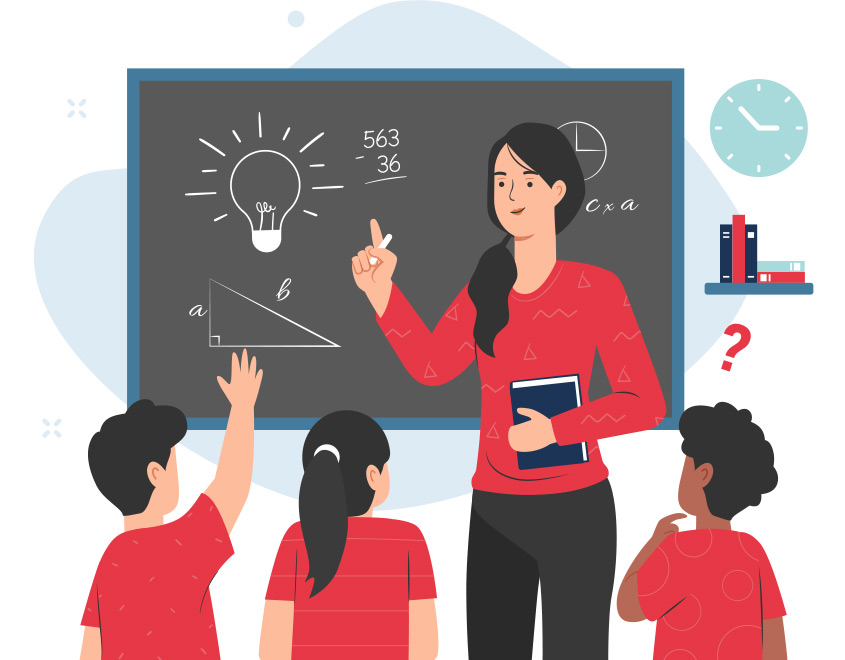Unlock Your Child’s Potential with Primary Science Tuition Singapore
Unlock Your Child’s Potential with Primary Science Tuition Singapore
Blog Article
A Comprehensive Guide to the Various Discovering Methods in Main Scientific Research Direction
The expedition of varied learning methods in primary science guideline provides an opportunity for teachers to enhance trainee involvement and comprehension dramatically. By examining hands-on understanding techniques, inquiry-based methods, and collective methods, we can identify efficient practices that accommodate numerous finding out styles. Furthermore, the combination of innovation and set apart guideline plays a vital role in cultivating a comprehensive setting. However, the inquiry stays: just how can these methods be effectively implemented in the classroom to maximize their impact? The answer hinges on a more detailed examination of each technique and its effects for training scientific research.

Hands-On Discovering Strategies
Hands-on knowing techniques play an essential duty in main science direction, involving trainees in active expedition and experimentation. These approaches permit learners to interact directly with materials and sensations, promoting a much deeper understanding of scientific principles. By utilizing manipulatives, versions, and real-life experiments, instructors create a setting where trainees can observe, assume, and check their ideas.
Such strategies not just boost understanding yet likewise grow essential thinking and analytical abilities. When pupils get involved in activities like constructing easy machines, growing seeds, or performing chemical responses, they are motivated to ask inquiries and seek answers through their own monitorings. This experiential strategy helps to debunk complex scientific principles, making them extra relatable and available.
Additionally, hands-on understanding promotes partnership among peers, as students often operate in teams to carry out experiments or share findings. This team effort not just enriches their understanding experience but likewise develops necessary social abilities. Inevitably, incorporating hands-on strategies in key science direction cultivates a long-lasting love of discovering and inquisitiveness about the natural globe, laying a strong structure for future academic pursuits in science and beyond.
Inquiry-Based Discovering
Inquiry-based knowing is an instructional technique that urges trainees to ask concerns, explore sensations, and construct their own understanding of clinical ideas. This approach changes the focus from conventional teacher-led instruction to an extra student-centered experience, where students take the campaign in their instructional trip. By fostering curiosity, inquiry-based learning advertises much deeper engagement with the product, enabling pupils to discover topics in a purposeful context.
In technique, this method commonly involves hands-on experiments, monitorings, and important thinking tasks that line up very closely with the clinical method. Pupils are urged to create hypotheses, style investigations, and evaluate information, which cultivates necessary skills such as logical and analytical reasoning. The role of the instructor in this structure is to promote exploration, directing trainees via the questions process while encouraging independent idea and partnership.
Moreover, inquiry-based discovering supports a feeling of ownership over the knowing process, inspiring pupils to go after expertise proactively. This approach not only enhances understanding of scientific principles however likewise fosters a long-lasting love for learning, gearing up pupils with the skills necessary to navigate a significantly intricate globe.
Collaborative Learning Approaches
Collective learning methods encourage pupils to engage in meaningful communications with peers, cultivating a shared obligation for their instructional results. In main scientific research guideline, these methods encourage learners to function with each other to check out clinical ideas, solve problems, and conduct experiments (primary science tuition Singapore). By joining team tasks, trainees can utilize varied viewpoints, enabling for richer understanding and retention of clinical knowledge
One secret element of collaborative discovering is the focus on interaction abilities. Pupils have to articulate their thoughts, listen proactively to others, and bargain concepts, all of which are essential expertises in both real-world and scholastic contexts. This social communication not only improves their understanding of clinical concepts but also promotes team effort and dispute resolution abilities.
When students see the worth of their have a peek at this site payments within a group, they are a lot more likely to take ownership of their discovering journey. Generally, incorporating collective understanding approaches in primary science instruction grows a dynamic discovering setting that prepares students for future academic and social difficulties.
Technology Combination in Scientific Research
The integration of modern technology in main science guideline boosts finding out experiences by supplying ingenious devices and sources that support numerous mentor methodologies, including collective discovering - primary science tuition Singapore. Making use of digital platforms, simulations, and interactive applications allows students to involve deeply with scientific principles, promoting a more hands-on strategy to discovering
Online laboratories, for example, allow students to carry out experiments securely and effectively, promoting inquiry-based learning. These tools can imitate real-world clinical scenarios, permitting trainees to picture intricate processes that would certainly be difficult to Check Out Your URL duplicate in a conventional classroom setting. In addition, modern technology promotes communication and partnership amongst trainees, as they can share findings and collaborate on tasks via on-line systems.
In addition, multimedia discussions and educational videos can improve lessons by dealing with varied learning designs, making abstract concepts a lot more easily accessible. Information evaluation tools likewise empower students to gather and interpret clinical data, strengthening critical believing abilities. Generally, the critical incorporation of innovation in main scientific research instruction not just boosts engagement yet additionally prepares trainees for a technologically advanced culture, furnishing them with necessary abilities for future scientific endeavors.
Distinguished Guideline Methods
Distinguished instruction techniques are crucial for dealing with the varied needs of learners in primary scientific research education. These techniques allow instructors to customize their mentor approaches to suit varying capacities, passions, and discovering styles within the class. By using distinguished guideline, teachers can produce an inclusive setting that promotes interaction and improves understanding of scientific principles.
One reliable method is to make use of adaptable organizing, which allows students to collaborate with peers at comparable skill degrees or with varying viewpoints. This strategy urges peer discovering and advertises essential reasoning. In addition, supplying choices in projects can equip trainees, allowing them to choose tasks that reverberate with their interests while still meeting curricular goals.
In addition, incorporating tiered projects is one more important strategy. By creating tasks with differing levels of complexity, instructors can make certain that all students are properly tested, regardless of their efficiency. Making use of formative evaluations to evaluate navigate to these guys recognizing further allows educators to change their training techniques dynamically, ensuring that each learner gets the support they require.
Ultimately, implementing set apart instruction approaches in key scientific research education and learning not only enhances pupil understanding results but also cultivates an interest for science, preparing students for future scholastic pursuits.

Verdict
In summary, efficient primary scientific research direction necessitates a diverse technique that encompasses hands-on understanding, inquiry-based methods, and collective methods. The assimilation of technology and distinguished direction even more satisfies diverse understanding styles, promoting a setting for exploration and important thinking. By executing these approaches, teachers can improve trainee involvement and understanding, inevitably supporting a lifelong interest for science and query. Such extensive approaches are important for developing educated and curious future scientists.
The expedition of diverse learning techniques in key scientific research direction presents a possibility for instructors to enhance student engagement and comprehension significantly.Hands-on knowing strategies play a critical duty in primary science instruction, involving trainees in energetic expedition and trial and error.Inquiry-based knowing is an instructional strategy that encourages students to ask concerns, explore phenomena, and build their very own understanding of scientific concepts.Joint understanding approaches empower students to involve in meaningful interactions with peers, fostering a shared duty for their instructional end results. In general, incorporating collective learning methods in key scientific research direction grows a vibrant knowing setting that prepares trainees for future academic and social challenges.
Report this page